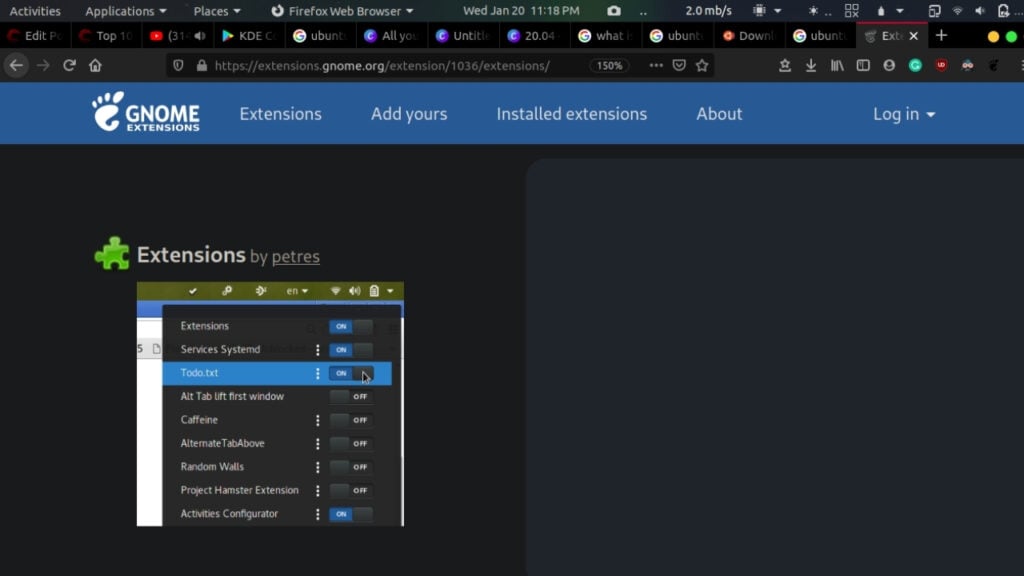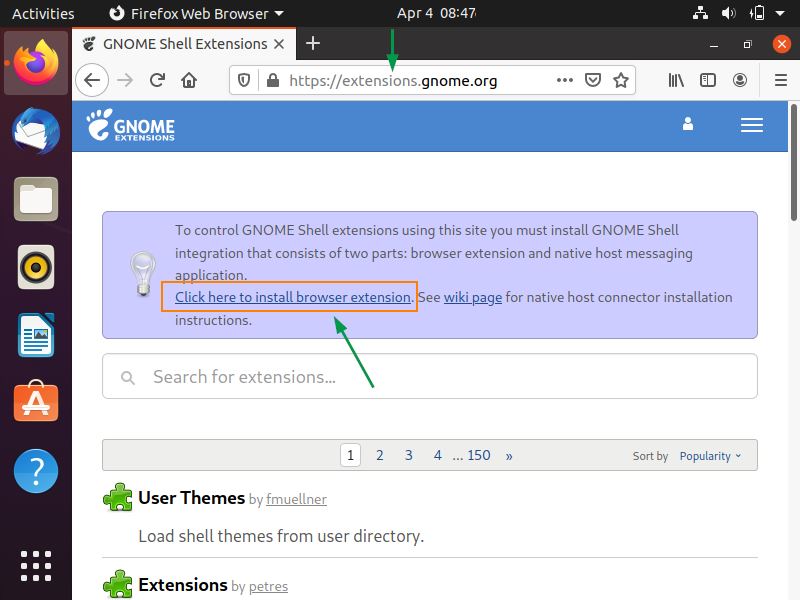

prefix, then at least the specified bits must be set. is used as the prefix, then at least on category must have at least the respective bit set for a file to match.

You can use the -perm option to search for files based on their permissions.
#Ubuntu find file extension plus#
Use the plus and minus characters for “more than” and “less than,” just as you would when searching by size.įind. The find command can also be used to look for files based on when they were last modified, accessed, or changed. type f -size +1M -size 3M Find files by modification You can even search for files within a size rangeįind. If you want to search for files with a greater than 1MB size use + The following suffixes can be used to specify the file size: The -size parameter should be passed along with the size parameter to find files based on their size. Specify the type of file you are searching for by using the -type option and one of the following descriptors:įind public_html/wp-admin/ -type d Find files by size If you need to find a specific file type, such as a regular file, a directory, or a symlink, you might need to search for specific file types. To find files without the given extension, use the following commandįind -type f - not -name '*.php' Find files by type You can search for files by extension just like you can search for files by name.
#Ubuntu find file extension how to#
Use -iname instead of -name, to run a case-sensitive search How to find files in linux by extension You can search for a file by its name by using the -name option. js (JavaScript files).įiles can be found by name by using the find command.

(expr ) : If ‘expr’ is true, then true utilized for grouping criteria with OR or AND. user name: Look for files with the user name ‘name’ or the ID ‘name’. size +N/-N: Look for files with ‘N’ blocks ‘N’ followed by ‘c’ can be used to measure character size ‘+N’ denotes size > ‘N’ blocks, while ‘-N’ means size ‘N’ blocks. empty: Look for files and folders that are empty. print: Print the path names of the files identified using the remaining criteria. perm octal: If the permission is ‘octal,’ look for the file. newer file: Look for files that have been updated or created since ‘file.’ name demo: Look for files with the name ‘demo’ in the filename. links N: Find files that have ‘N’ links. inum N: Look for files with the number ‘N’ in the inode. ok CMD: Similar to -exec, but the user is prompted beforehand. exec CMD: The file being searched that meets the above criteria and returns 0 for a successful command execution exit status. Options, search patterns, and actions are separated by operators in the expression attribute.The path… property specifies the directory or directories from which find will look for files.The symbolic link treatment, debugging options, and optimization strategy are all controlled by the options property.Files can be located by itself or in conjunction with other programs. The find command is the most fundamental and powerful tool for working with files on a Linux system. Find then moves on to the next path until all paths have been explored. In AND operations, or in OR operations, the outcome is “known” when the left side of the expression is TRUE or FALSE. According to the rules of precedence, it evaluates each expression, from left to right, within each directory tree specified by the given paths. How Find command works?įind locates files on your computer. In this article we will learn how to find files in linux using the Find command. You can further combine it with ‘- exec’ option to perform various actions on the results found by the find command. Files, folders, names, creation dates, modifications dates, owners and permissions can be searched using this command. You can use it to find and operate on files and directories. How to find files in linux by extensionįind is a UNIX command line utility that walks a file hierarchy.


 0 kommentar(er)
0 kommentar(er)
